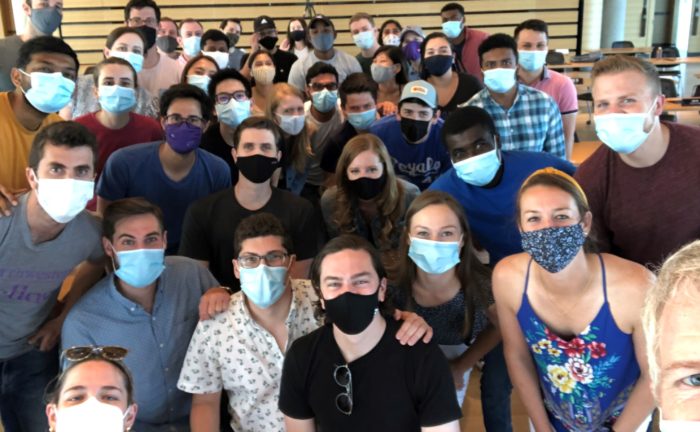
Seven Things We Should Learn From Zoom Teaching
This week I’m celebrating the end of a most unusual academic year – I just wrapped up my spring quarter courses. It was a busy twelve months: I taught a total of 10 courses in the Kellogg MBA program, including classes in Beijing, Miami, and Koblenz, Germany. Of the ten, four were in-person, five were on Zoom and one was hybrid.
I’m also celebrating the end of teaching on Zoom.
The Zoom Transformation
Just over a year ago, teachers all over the world were forced to transition to Zoom or other online platforms. In-person teaching just wasn’t possible in a world with COVID-19 and so, with very little notice, the format changed.
It was a massive shift. Instead of wandering around a classroom, instructors were staring at a camera. Everything was different. Cold-calling, discussions, lectures – nothing in the online world is quite the same.
But teachers figured it out, often through trial and error. One day early in the transition I abruptly ended a Zoom class while trying to send people to break-out rooms. I routinely forgot to hit the record button on Zoom. I learned that once you send students to the break-outs groups, they can’t see your screen. I also learned that you need to remind students to be careful and thoughtful about what they post in the chat.
The End of Zoom
Now that we are emerging from the pandemic, I predict Zoom will largely fade away as a platform for premium instruction. The system works well, but it simply doesn’t compare to the in-person experience.
I ran a bit of a test this quarter: I had two in-person classes and one Zoom class. While all the classes seemed to go quite well, the in-person classes clearly had a different energy.
I am not entirely sure why the Zoom experience falls short. It may be that it is too easy for students to multi-task when on Zoom. Perhaps the time before and after class adds unexpected value; this time doesn’t exist with Zoom, since students seem to always log on at the instant the class starts. Simply being physically present changes how we connect as individuals.
What We Should Keep
While Zoom should and likely will fade away, it is useful to consider what the system does particularly well. The question for instructors: how can we bring some of this into the in-person classroom experience?
Groups
Zoom’s ability to quickly create random groups is terrific. It gets everyone working with new people. This is a compelling advantage. In classroom breakouts, people tend to group with the same people every time. Often these are friends. How do we embrace Zoom’s random assortment feature?
Chat
The Zoom chat function is tremendous. It gives everyone a chance to jump into the discussion and provides lots of material for instructors to react to. Is there a way to bring something like this into the in-person classroom?
Flexibility
The ability to let students zoom in from anywhere is amazing. It provides compelling flexibility. Sometimes people need to be out of town. People get sick. How can we keep this when we are back to in-person classes?
Similarly, with Zoom, instructors have the freedom to teach from anywhere and travel when needed. Should this be an option going forward?
Class Recordings
Recording classes is a big benefit; people can review the material or catch up on things they missed. Zoom recordings are very good. In-person recordings are often very difficult to watch, with either a tiny instructor wandering around a room, or a video of a podium with the instructor occasionally walking by.
How can we record in-person classes well? And how can we ensure people still show up for an in-person class when the recording is available to watch at another time?
Travel
Zoom is dramatically easier for anyone who has to travel a long distance to get to the classroom. At Kellogg, for example, evening and weekend students often travel from the suburbs or even different cities. How do we capture the travel benefits of Zoom while maintaining the classroom experience? I wonder about mixed classes: how about an evening class that has 5 in-person sessions and 5 on Zoom?
Guest Speakers
Zoom makes it easy to include guest speakers. Instead of spending a day to travel to campus, a business executive can simply log-in and join the conversation. A short visit, never a real possibility with an in-person format, becomes an option. How can we make this work when students are in-person?
Virtual Course Moderators
Kellogg assigned Virtual Course Moderators to each Zoom class. These individuals managed technical issues, kept attendance, monitored participation, provided feedback to the professor. If the sound went out, the VCM would be the first to chime in with a “Professor, we can’t hear you!” They added a lot of value. Perhaps an in-person course would benefit from similar support.
The Road Ahead
With luck, most teachers will be teaching in-person next year. I certainly hope that is the case! The challenge for us is to capture some of the positive characteristics of a Zoom class while getting back to the magic of in-person teaching, the format that has worked well for centuries.
Comments RSS Feed